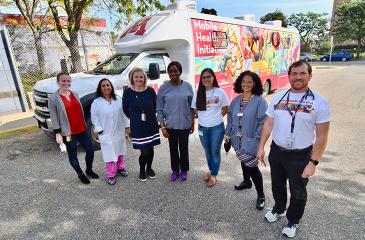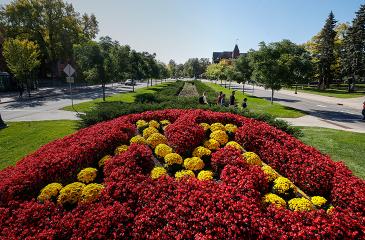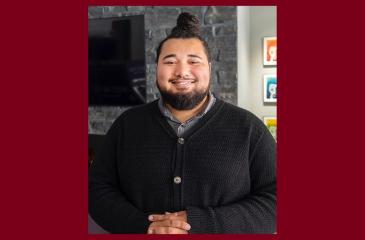Over the past two years, the Mobile Health Initiative (MHI) has had a remarkable impact, mobilizing over 250 U of M volunteers, from medical faculty to undergraduates, partnering with community-based organizations, local and federal governmental agencies, and working to improve health equity in our communities.
Most notably, MHI partnered with the Minnesota Department of Health, along with Global Medicine, Global Pediatrics and the U’s Medical Reserve Corps, to provide health assistance to over 1,200 Afghan newcomers. Coordination and deployment was made possible with leaders in refugee and migrant care and Afghan American health providers and community leaders. This included evaluations for any immediate needs, social support services using trauma-informed care best practices, and coordinating primary care appointments at community health centers, including the Community-University Health Care Center, where many have established care and are completing their comprehensive refugee screening. Many of the new arrivals are now working as interpreters, case managers, and committing their time to help other newcomers as they build new lives here in Minnesota.
MHI’s partnership with the state of Minnesota—particularly with the Departments of Human Services and Health, and community clinics—was a multi-agency, multi-specialty effort that was highly successful and has allowed them to link the most helpful services for the newest Minnesotans coming from Afghanistan. Community feedback relayed the response worked so well that it now serves as a model for the United States for integrated mobile care.
Driving Innovation & Discovery

M Simulation is Committed to Inclusive, Diverse Representation in Simulation-Based Learning
Patient simulators or full-body mannequins provide critical opportunities for learners to practice technical and procedural skills that would otherwise be unsafe to practice on a real human being. Until recently, simulation equipment companies offered only light-skinned mannequins. Now manufacturers are producing light, medium and dark-skinned mannequin options. Today, M Simulation has two dark-skinned mannequins—one infant mannequin and one adult mannequin in an effort to make a more inclusive, diverse environment for learners.
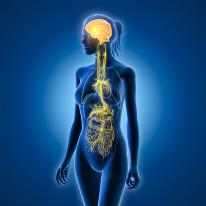
U of M Awarded $21M to Lead Research Revealing Effects of Vagus Nerve Stimulation in Humans
An interdisciplinary team of U of M Twin Cities researchers are leading a comprehensive global clinical study that seeks to reveal the functional effects of vagus nerve stimulation across the human body. The Research Evaluating Vagal Excitation and Anatomical Links (REVEAL) project is a $21 million National Institutes of Health-funded project that will take place over three years. REVEAL aims to study the anatomical connections and functional effects of vagus nerve stimulation, which is an FDA-approved treatment for epilepsy and depression.
Advancing Interprofessional Education & Training
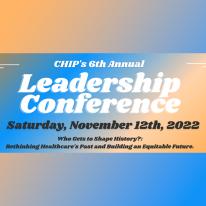
Health Professional Student Leadership Conference
Attend the Health Professional Student Leadership Conference on Nov. 12 to develop a better understanding of your role in leadership as future health professionals; build relationships with students across professions; and explore diverse perspectives on leadership in health care.
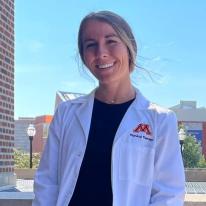
Students: What Do You Enjoy Most About Interprofessional Activities?
“Teamwork is undoubtedly important for providing patient-centered care. I like that the interprofessional activities allow students to have space to explore different disciplines in a learning environment. It gives us a place to ask questions, make mistakes, and collaborate as health professionals and future team members.” - Kelsey King, doctor of physical therapy student
Partnering with Communities
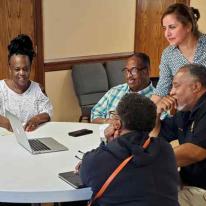
Radical Listening to Reduce Stroke Disparities
Black Americans are twice as likely to experience a stroke and face worse outcomes compared to their white peers. A new Clinical and Translational Science Institute-supported study is working to change that, by training “stroke champions” who can educate the rest of their community.
U-Wide Events and Opportunities

“Who Ya Gonna Call?” When Your Patients Can’t Decide by Themselves
In daily clinical practice, care decisions must be made even when patients lack capacity to independently provide informed consent and shared decision-making. If the patient has not named someone to speak for them, it can become a challenge to know how best to proceed. Join the Center for Bioethics for the next presentation in the Unpacking Bedside Bioethics series on Nov. 8 and explore various complexities of surrogate decision making and propose strategies for honoring patient values and goals when alternate decision makers are needed.
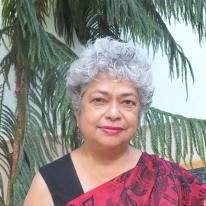
Ethical Leadership: The Fractal for Equitable Enduring Change
Join the Bakken Center for Spirituality and Healing on Nov. 3 for the next presentation in the Wellbeing Series and explore ‘unworkable’ systems and cultural norms, and learn how to take action to generate equitable and enduring results; how to deconstruct what divides groups of people and transcend polarities to respond ethically to complex social issues; and understand how radical transformational leadership creates openings for profound change.
